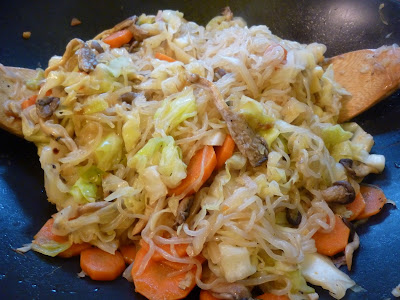 |
| Make bubbly water at home - skip the sugary additives. Follow Foods For Long Life on FACEBOOK ! |
Soda - A Danger to your Health
There are many reasons to avoid drinking soda - where do I start?
Soda is Acidic
For those of you who are into raw food or who consume lots of fruits and veggies, you are eating a healthful, alkaline diet. (FYI, pH above 7 is alkaline and under 7 is acidic). Eating an alkaline diet supports our blood's normal pH level of 7.356. When we consume acidic food or drink, our body must work very hard to neutralize and detoxify the acids. This hard work of maintaining the proper pH leads to the depletion of our alkali mineral reserves. Over acidification can lead to acidosis, a major root of illnesses.
Chronic acidosis can lead to joint pain, GI issues, muscle weakness and seizures, headache, confusion, heart disease, allergies, osteoporosis, accelerated aging, digestive problems, dental erosion and decay, risk of kidney stone formation, acne and many other issues.
The pH of popular sodas are:
Mug Root Beer = 4.038
Diet 7 Up = 3.706
Diet Mountain Dew = 3.365
Sprite = 3.298
Diet Coke = 3.289
Mountain Dew = 3.229
7 Up = 3.202
Diet Dr. Pepper = 3.169
Slice Orange = 3.059
Diet Pepsi = 3.031
Lemon Nestea = 2.969
Dr. Pepper = 2.899
Pepsi = 2.530
Coke = 2.522
Cherry Coke = 2.522
RC Cola = 2.387
(Source - Jain, Nihill, Sobkowski, Agustin, General Dentistry, March/April 2007)
To give you a reference, TAP WATER has a pH around 7 and BATTERY ACID has a pH of 1. Drinking a Coke is a lot closer to drinking battery acid than water.
Soda Weakens Bones
Drinking lots of soda can impair the calcification of growing bones in children. For adults, it can increase the risk of osteoporosis. When the body is busy robbing minerals like calcium to neutralize the acidic soda, it is taking those minerals from our bones. Phosphoric acid, also contained in soft drinks, is also associated with calcium loss.
Drinking Soda Leads to Weight Gain, Obesity and Diabetes
A 12 ounce can of Coca Cola Classic has 140 calories. Drinking 2 a day would add over 100 thousand calories a year or the equivalent of 29.2 pounds! Drinking soda over the course of several years can lead to obesity, and it has. Two thirds of the people in the U.S. are either overweight or obese, largely because of soda consumption. Obesity increases the risk of diabetes so they go hand in hand. But let's look at the positive side. By only cutting out just the soda in someone's diet, they could lose significant weight and lower their risk of diabetes.
Beware the Wolf in Sheep's Clothing
I know that many people who drink diet soda feel that they are drinking something a tad more healthy than regular soda. Unfortunately, many artificial sweeteners are even more dangerous than sugar. Despite having the comfort of an FDA approval, aspartame is an extremely dangerous substance. After consumption, this artificial sweetener eventually turns into phenylalanine, aspartic acid and methanol -which ends up converting into the carcinogens formaldehyde and formic acid. Avoid aspartame at all costs.
Bubbly Water
I could rant on about soda but let's get to the fun stuff. My husband and I really enjoy drinking Pellegrino mineral water. It's alkaline with a pH of ~7.7 and has no calories. For Christmas, we got a really cool Sodastream bubbly water maker from my brother-in-law Don so that now we can make our own. I think it's actually a soda maker but if you toss out all of the unhealthy little flavor packets that come with it, you can use it to make some really nice bubbly water. And it's quite a bit of fun.
 |
| Remove back and insert CO2 cartridge. Replace back. |
 |
| Insert bottle that comes with soda stream. Press top button 3 times to carbonate. |
 |
| Drink as is or add your own healthy flavors. |
 |
| Add lime, lemon, or a splash of juice. Pictured is bubbly water with organic tart cherry juice. |
So if you have a soda habit, try some bubbly water instead. It can make a drastic difference in your health and longevity. Salute!































